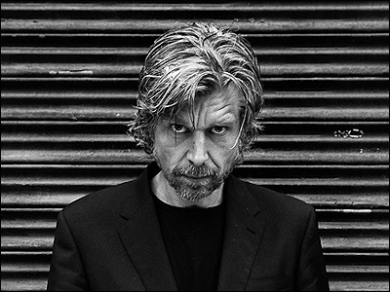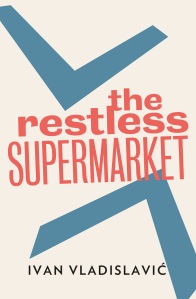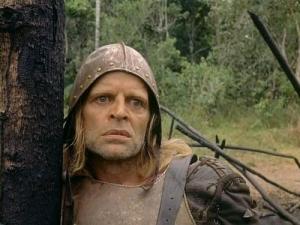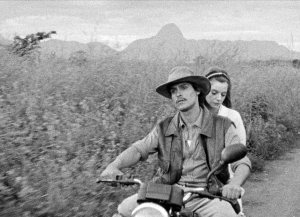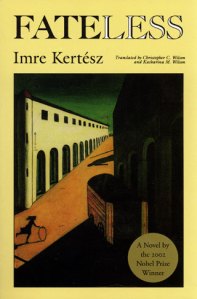
This review was originally published in 3:AM Magazine
‘Every American hungers to move’, writes John Steinbeck in Travels With Charley. He may be right, but by and large they hate to walk. The quintessential mode of conveyance in the US novel is the vehicle: by wagon for Faulkner’s mourners or Steinbeck’s wage-slaves, by boat for Melville or Twain, by car for Kerouac, Hunter S. Thomson or Tom Wolfe, by motorbike for Robert M. Pirsig, or on horseback for Larry McMurthy or Cormac McCarthy. When McCarthy strips his characters of a ride in The Road it feels like a symbolically loaded statement.
Back in the Old World we are rather more tied to our bipedal roots. Indeed, if many of the great American novels are in one way or another about road trips, the modern European novel is similarly obsessed with walking: from Proust’s miasmic peregrinations around Combray, to Doblin, Bely and Joyce’s more metropolitan flaneur-isms, or more recently Sebald’s psycho-geographic ramble around East Anglia in The Rings of Saturn, which has contributed to a new UK-based walking craze through the likes of Iain Sinclair, Will Self and Robert Macfarlane. (Beckett, as usual, defines this trend by negation, constraining his characters to more stationary forms of existential bewailment. If movement is allowed, it tends to involve either an ignominious end in some distant roadside ditch or, at a push, dragging oneself along face-first in the mud).
This transportational preference has its formal and thematic correspondences. The macho, open-road tradition of the Great American Novel privileges romantic excess, the formless howl rather than the European well-wrought urn. If the American novel has retained something of the frontier mentality, we crowded Old World-ers are more interested in constraints, both actual and formal. The US has Catch 22, Gravity’s Rainbow, Underworld and Infinite Jest, Europe has the nouveau roman and OULIPO. If American literature is about discovery and new beginnings, Europeans are crushed by the weight of history. American idealism throws off the paralyzing subjectivist shackles of post-Enlightenment thought and hubristically gropes for the thing itself, while Old Europe turns ever further inward, locked into its own ruminations on the writing process and the suffocating grip of worn-out categories of being. While the American novel aspires to be – in the words of Saul Bellow’s narrator Charlie Citrine – ‘magically, cosmically expressive and articulate, able to say anything’, the European novel is preoccupied with the impossibility of actually saying anything at all. In fact, if there is another quintessential subject for the modern European novel alongside walking, it’s writer’s block.

These twin topics are the backbone of Robert Walser’s masterfully enigmatic 1917 novella The Walk, as they were in some ways the defining states of his life. His predilection for the former is immortalized in the eerie photo of his corpse, collapsed in the snow during the course of one of his perambulatory excursions from the psychiatric hospital in which he spent his final years. And writer’s block – that defining symptom of modernist anxiety from Hugo von Hofmannsthal to Kafka, Beckett and Pessoa – is one of Walser’s enduring subjects. Just as one of his most important descendants Thomas Bernhard’s novels tend to consist of the thing that his protagonist does or writes instead of writing their magnum opus, the narrator of Walser’s The Walk imagines himself out in the world on various trivial matters of business, on an excursion he has taken in order to cure his writer’s block.
The narrator describes his outing as an escape from the ‘room of phantoms’ in which he has been failing to write, emerging out of the darkness and silence of literary composition into the light of experience and sensation. Yet of course this is an illusion: what we are reading is writing, not walking. It is a piece of writing masquerading as writing’s opposite, literature in the guise of non-literature:
“As far as I remember, I found myself, as I walked into the open, bright, and cheerful street, in a romantically adventurous state of mind, which pleased me… Everything I saw made upon me an impression of friendliness, goodness and youth. I quickly forgot that up in my room I had only just a moment before been brooding gloomily over a blank sheet of paper.”
Walser establishes an opposition between the world as Apollonian lightness and the text as Orphic darkness. The narrator may feel inspired to communicate his experience of this world of the senses, but – as he reminds us by foregrounding the act of composition – he can only do so by returning to his ‘room of phantoms’ and entombing it within another text.
We can recognize in this the classic contradiction facing the modern European author: the chasm between experience and representation, referred to by the theorist Rene Wellek as the ‘ontological gap’ separating the world and the text. Baudelaire’s painter of modern life may be a flaneur or ‘gentleman stroller of city streets’, but the writer who converts this world into black marks on paper is a solitary creature locked in deadly battle with his own failure to recreate it. “Real books”, writes Proust in Time Regained, “should be the offspring not of daylight and casual talk but of darkness and silence”. Literature may aspire to communicate some of the instantaneity of experience, but somewhere along the line it has lost faith in the validity of its own methods of doing so.
While a sense of the impossibility of reclaiming the past through writing resonates beneath The Walk, it is at least superficially concealed by comedy. Indeed, the abject failure of Walser’s prose to recreate anything resembling the world outside of the text is the book’s running gag. The formal design of the novel functions in part as a liberating device that allows Walser to write joyously and exhilaratingly badly. His style is a cascade of self-consciously literary adjectives, balanced somewhere between heavy-handed and absurdly overwritten. A lady he encounters on the stairs “presented to the eye a certain pallid, faded majesty”; a passing scholar is “Incontrovertible power in person, serious, ceremonial and majestical”, his gait “like an iron law” and his hat “like an irremovable ruler”. Yet in these adjectives we hear not the objects they describe, but the groping for literariness: when does one ever think these things, encounter these sentiments?
Whereas realists go to great and artful lengths to write dialogue that conveys the necessary narrative information to the reader while still appearing natural and believable, Walser’s direct speech rejects even the most basic attempts to conceal its authorial purpose. Why describe his own reaction to a statement when he could merely make his interlocutor describe it for us?:
“Your features are suffused this very moment with an appreciably great joy. Your eyes are shining. Your mouth, perhaps for the first time in years, because pressing daily troubles (and consequently a sorrowful mood and all sorts of dark thoughts) have forbidden you laughter, now has about it unmistakably a trace of laughter. Your previously darkened brow looks decidedly serene”
We can hear in much of this curiously gauche posturing a parodic echo of the polite Victorian realist novel. The post-Flaubertian stylist is a tortured syllable-counter endlessly searching for the bon mot, the mysterious confluence of euphonious vowel and well-weighted cadence that will momentarily exalt the quotidian and transport his reader to the spine-tingling Nabokovian realm of aesthetic bliss. Yet Walser’s style and structure is directed at throwing this romantic process into comic relief, exposing the absurdity at its core. The writer toils away in his ‘room of phantoms’, desperately disgorging verbiage onto the page in his doomed attempts to transform the mundanities of experience into great literature. Yet all that emerges from it is artfully framed failure.
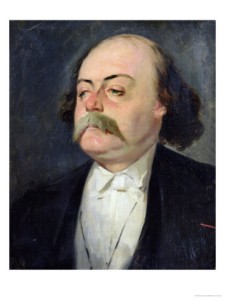
If Walser’s comic dialogue with the language and gestures of literary convention is at times gleefully impish, it would be a mistake to regard The Walk as anything so self-evident or easily categorized as satire. Its vision is too opaque, its meaning too enigmatically unfulfilled, its contours edged with darkness. Walser was one of Kafka’s favourite authors, and the oneiric seamlessness of Kafka’s more surreal narratives such as The Castle or Description of a Struggle is immediately recognizable. The narrator moves from one distorted interaction to another in a kind of lucid dream, a liminal state that seems to draw from both conscious and unconscious, blurring the straight lines of the former with the associative fluidity of the latter. The persona of the narrator evaporates within this mnemonic haze, the self who took the walk irreconcilable with the self who attempts to recreate it.
Indeed, while Walser’s narrator only hints at the malaise that underpins his comic riffing, the more the discord builds the more we come to realize that it conceals a kind of desperation. Stripped of its tragi-comic verbal plumage, what really takes place in Walser’s story may be expressed as something like this: a writer, faced with the despair of his untouched manuscript, rushes out into the world in search of inspiration. However, all he finds there is bourgeois mundanity: a bookseller peddling popular trash, a sycophantic bank clerk, a garishly painted butcher’s shop, an overbearing lady patron. Back in his miserable room he attempts to mobilize the rhetoric and devices of literary history to infuse this meaningless series of events with grandeur and significance – but somehow the spark fails to kindle. Perhaps the world was once an enchanted place full of great and significant happenings, the raw material that the writer need only sculpt into literary form to produce great art. Yet somehow this magic has disappeared. When he tries to write literature, what comes out is not the world, is not him, is not life, at all. Indeed, all he can express is literature’s absence from the world.
The great artist, so the cliché goes, attains a surrogate immortality. But at the end of the story we leave Walser’s narrator enveloped in nightfall: the darkness of a world and a self that cannot be reclaimed, that is gone forever the instant it has passed.
—
Note: Originally published (in German) in 1917, The Walk is reissued by New Directions. Christopher Middleton’s classic translation has been updated by Susan Bernofsky to correspond to a rewrite of the story that Walser himself considered the definitive version.
“Only from the negative impulse, from the labyrinth of the No, can the writing of the future appear,” writes the narrator of Vila-Matas’s 2000 work, Bartleby and Co. If literature’s negative impulse was once directed at a world that it critiqued or transfigured from a position of relative detachment, in Vila-Matas’s work that negation has turned inward, and is directed against literature itself. His novels resist their own status as literature, but can only do so by confronting it and taking it as their inescapable subject matter. This is not quite the playfulness of postmodern metafiction, though it is certainly metafictional and in some ways playful. Instead of postmodernism we might instead call it post-literature. The trope of the funeral for literature employed in Dublinesque is one that might be applied to Vila-Matas’s work as a whole, underpinned by an irony that is closer to the gallows humor of Samuel Beckett or Thomas Bernhard than it is to the exuberance of John Barth or Thomas Pynchon. Modernism was always among other things the pursuit of forms of expression that stand outside of and contradict the logic of an increasingly commodified culture, which packages experience into easily assimilated units of meaning. If postmodernism is in some sense a liberation from the prohibitions of modernism and an embrace of commodity culture, Vila-Matas’s work is a tragicomic confrontation with modernism’s dwindling conditions of possibility in the era of postmodernity.
